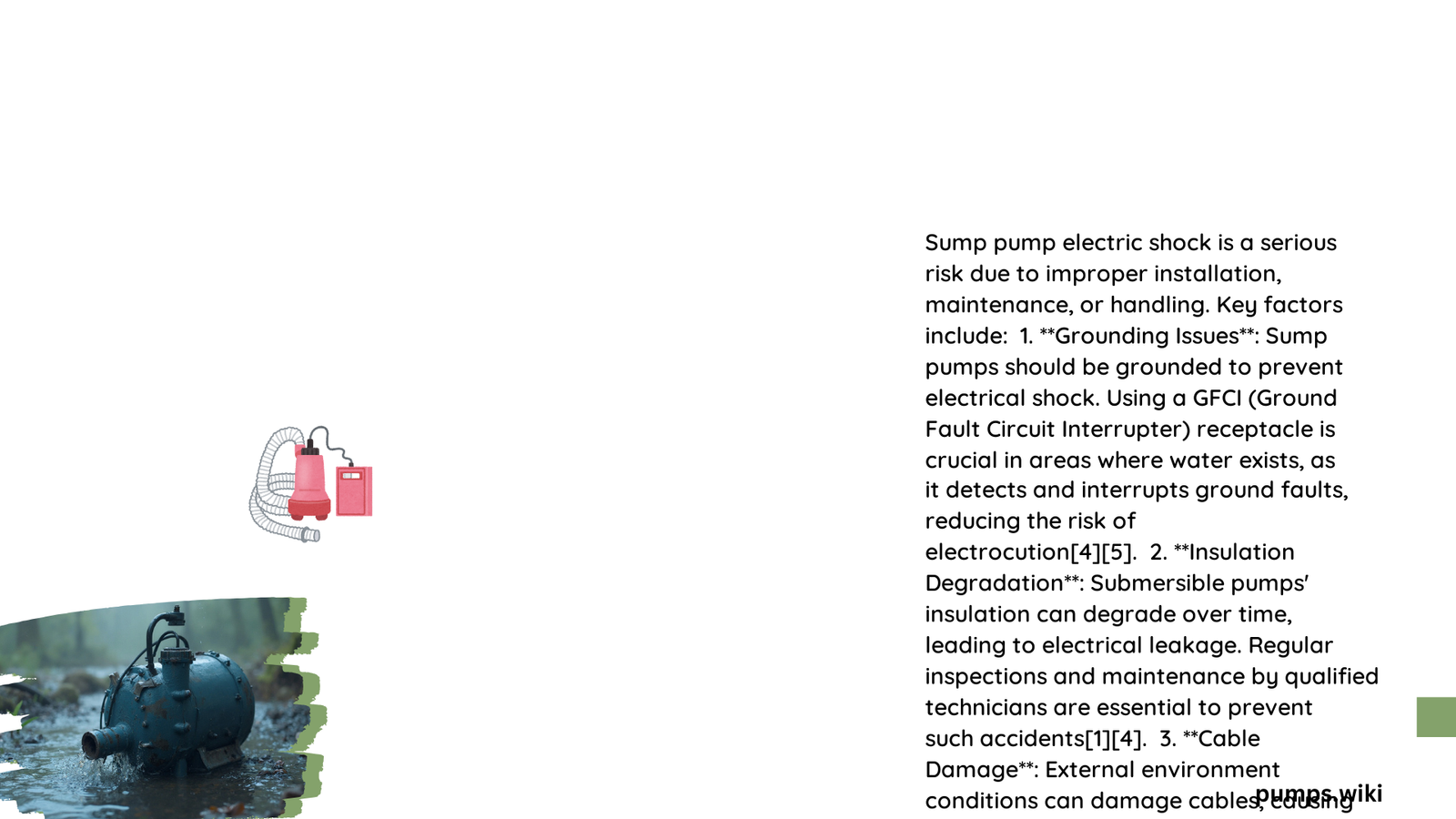Sump pump electric shock represents a serious and potentially fatal risk for homeowners. Electrical currents can unexpectedly travel through water and pump systems, creating dangerous scenarios where even minimal contact might result in severe injury or death. Understanding comprehensive electrical safety protocols, proper grounding techniques, and preventive measures is crucial for protecting yourself and your family from these hidden electrical threats.
What Causes Sump Pump Electric Shock?
Sump pump electric shock occurs through multiple potential pathways, each presenting unique risks to homeowners. Understanding these mechanisms is critical for implementing effective safety strategies.
Primary Electrical Shock Mechanisms
- Direct Current Transmission
- Water acts as an excellent electrical conductor
- Faulty wiring can create immediate shock pathways
-
Ungrounded systems increase electrical risk dramatically
-
Ground Fault Scenarios
- Damaged electrical insulation
- Moisture penetration in electrical components
- Inadequate circuit protection
Risk Factors for Sump Pump Electrical Hazards
| Risk Factor | Potential Consequence | Mitigation Strategy |
|---|---|---|
| Improper Grounding | High Shock Probability | Professional Electrical Inspection |
| Aged Electrical Systems | Increased Failure Risk | Regular System Maintenance |
| Water Exposure | Immediate Electrical Pathway | GFCI Protection |
How Can Homeowners Prevent Sump Pump Electric Shock?

Grounding Requirements
Proper grounding remains the most critical defense against electrical shock. Homeowners should:
- Install ground wire matching circuit conductor size
- Use minimum #14 AWG wire for residential applications
- Ensure ground rod depth of at least 8 feet
- Connect ground wire to service entrance ground
GFCI Protection Strategies
- Install GFCI circuits with 5 milliamp trip ratings
- Test GFCI protection monthly
- Replace damaged or non-functioning GFCI outlets immediately
- Maintain clear separation between electrical components and water
What Professional Steps Enhance Sump Pump Electrical Safety?
Recommended Professional Interventions
- Comprehensive electrical system assessment
- Periodic professional inspection of sump pump electrical connections
- Verification of proper grounding techniques
- Installation of advanced ground fault protection systems
Warning Signs of Potential Electrical Risks
- Intermittent pump performance
- Unusual buzzing or humming sounds
- Visible wire damage
- Corrosion around electrical connections
Technical Recommendations for Electrical Protection
Advanced Safety Protocols
- Use waterproof electrical enclosures
- Implement redundant grounding systems
- Install surge protection devices
- Maintain dry environment around electrical components
Electrical Component Selection
- Choose marine-grade electrical components
- Select pumps with integrated safety features
- Prioritize equipment with robust insulation
What Emergency Steps Should Be Taken During Electrical Incidents?
Immediate Action Sequence
- Disconnect power immediately
- Avoid direct contact with water or equipment
- Call emergency services if shock occurs
- Seek medical attention for potential electrical injuries
Cost-Benefit Analysis of Electrical Safety Investments
| Investment Level | Protection Scope | Estimated Cost Range |
|---|---|---|
| Basic | Limited Protection | $50 – $200 |
| Intermediate | Comprehensive Home Coverage | $200 – $500 |
| Advanced | Professional-Grade Protection | $500 – $1500 |
Conclusion
Sump pump electric shock prevention requires a multifaceted approach combining technical knowledge, professional intervention, and proactive maintenance. Homeowners must prioritize electrical safety through continuous education and strategic investment in protective systems.
